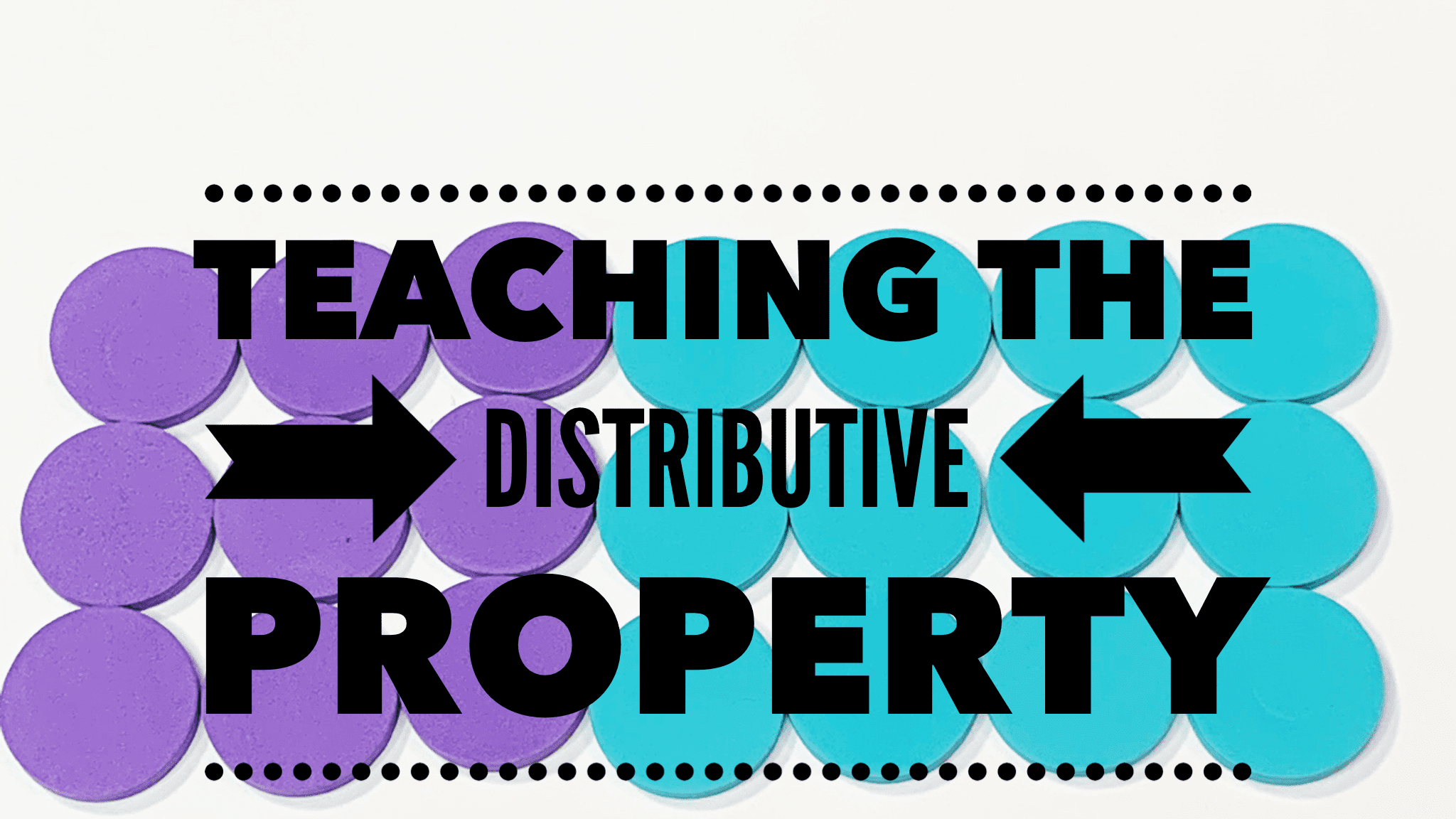
These distributive property worksheets and activities can simplify teaching the distributive property. Teaching the distributive property of multiplication can be quite challenging, but the concept is SO important for student as then begin more advance math concepts. As a third grade teacher, I often felt like my students weren’t quite developmentally ready for the distributive property. I introduced the distributive property in my multiplication unit, but I did not expect mastery until much later in the year. You can more about introducing multiplication here. As a fourth grade teacher, I see a need to revisit this complex topic. In fact, I carved out an entire week to focus on the distributive property before teaching my grade level multiplication standards. In this post, I’ve shared some of my favorite distributive property activities and lessons.
Distributive Property-Hands-On Activity
I like to introduce the distributive property of multiplication through hands-on work with arrays, not with distributive property worksheets. I begin by having students use counters to build a traditional array. For example, students may create an array of 3×7. I try to avoid creating large arrays, because that has a tendency to take up a lot of time. Plus, the counters get a little messy, and it’s important for students to SEE the patterns and relationships in this activity. Then, I ask students to determine a way they could break apart the single array into two arrays.
Next, I model how to write an equation to represent how I broke apart the arrays into two groups. We spend time discussing how the total remains the same, regardless of how it was broken apart. Students continue to represent how to use the distributive property to solve multiplication problems with two color counters.
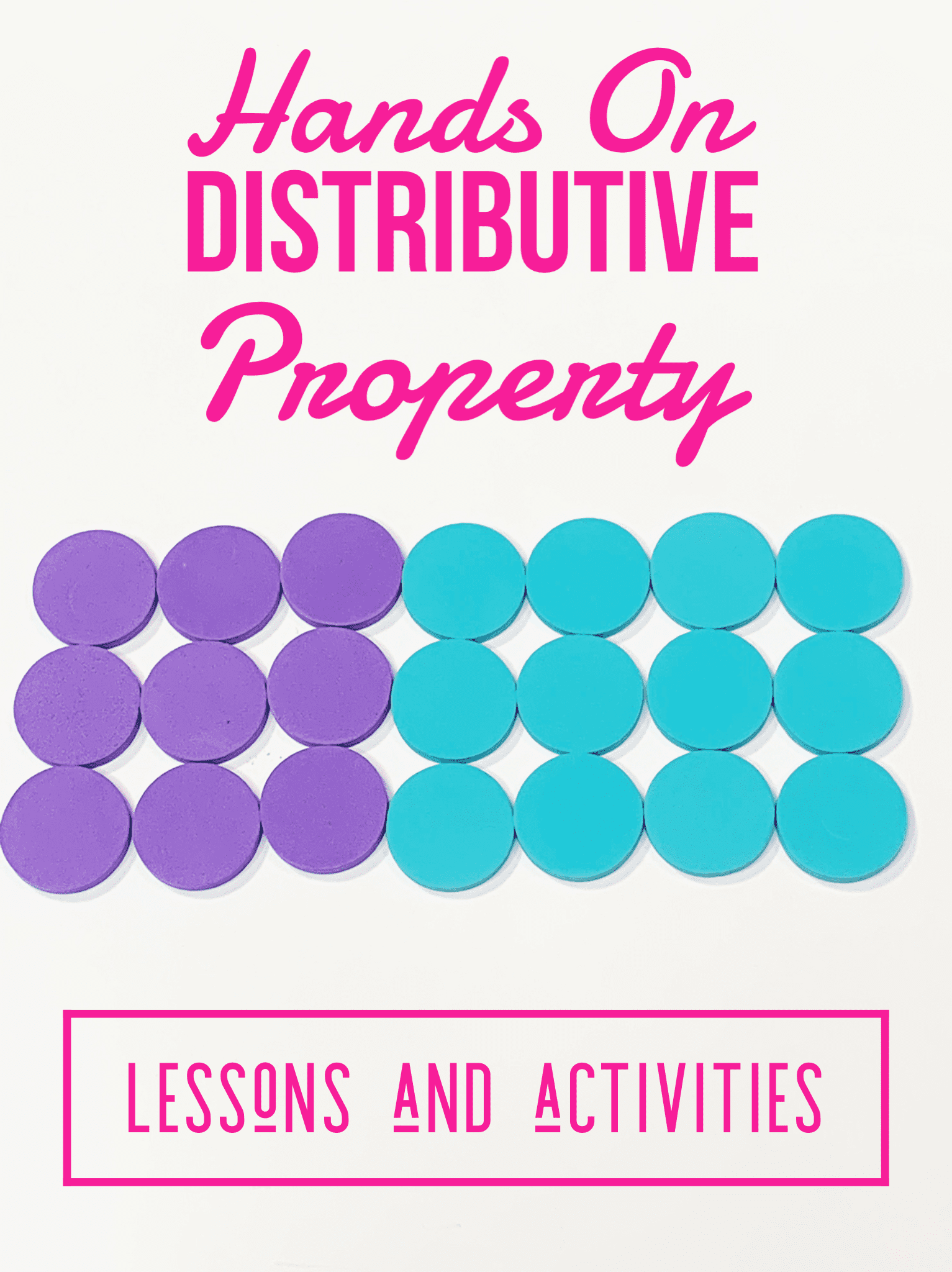
Distributive Property-Matching
Another one of my favorite activities is a distributive property of multiplication matching lesson. I give students a huge collection of arrays, and students work in a group to match arrays with arrays that can be combined to have the same dimensions and product. For example, students may match 8×6 with (8×3) and (8×3). This helps students see how they can break larger multiplication problems into 2 or 3 smaller ones. I recommend printing each group’s arrays a different color. That way when they all fall to the floor, it’s easier to tell whose is whose. You can download the arrays for free here.
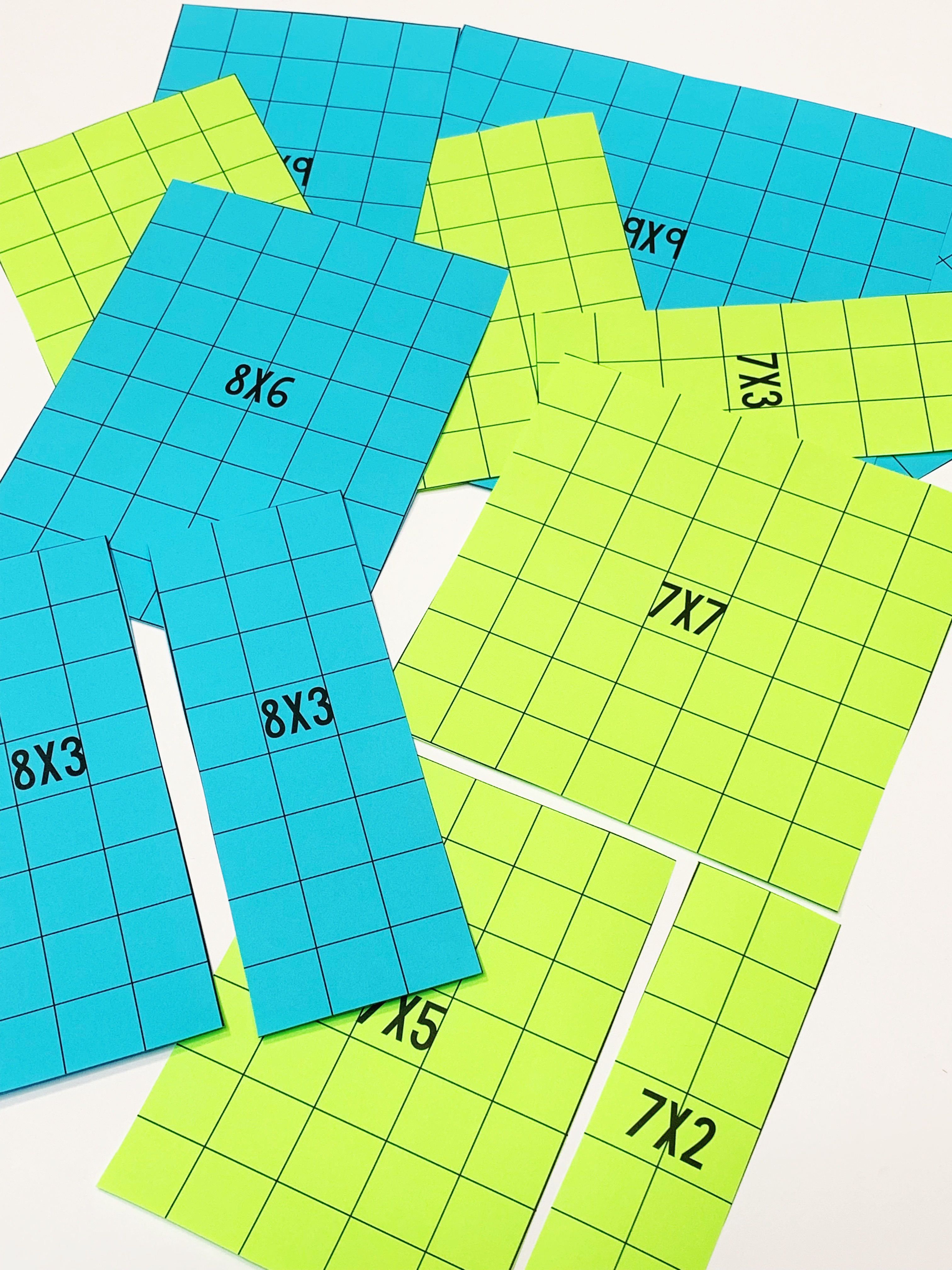
Distributive Property Worksheets-Cut and Paste
In the following distributive property of multiplication lesson, students complete a cut and paste activity. I assign groups different multiplication problems, and students try to make as many arrays as possible to show how to use the distributive property to solve the problem. I have student use grid paper and large white construction paper for this lesson. As you can see, we’re still working on how to represent the distributive property through an equation, but the concept is coming along nicely. You display these posters in the hallway as evidence of what we’re learning in class, as well as to allow other students to see the variety of models.
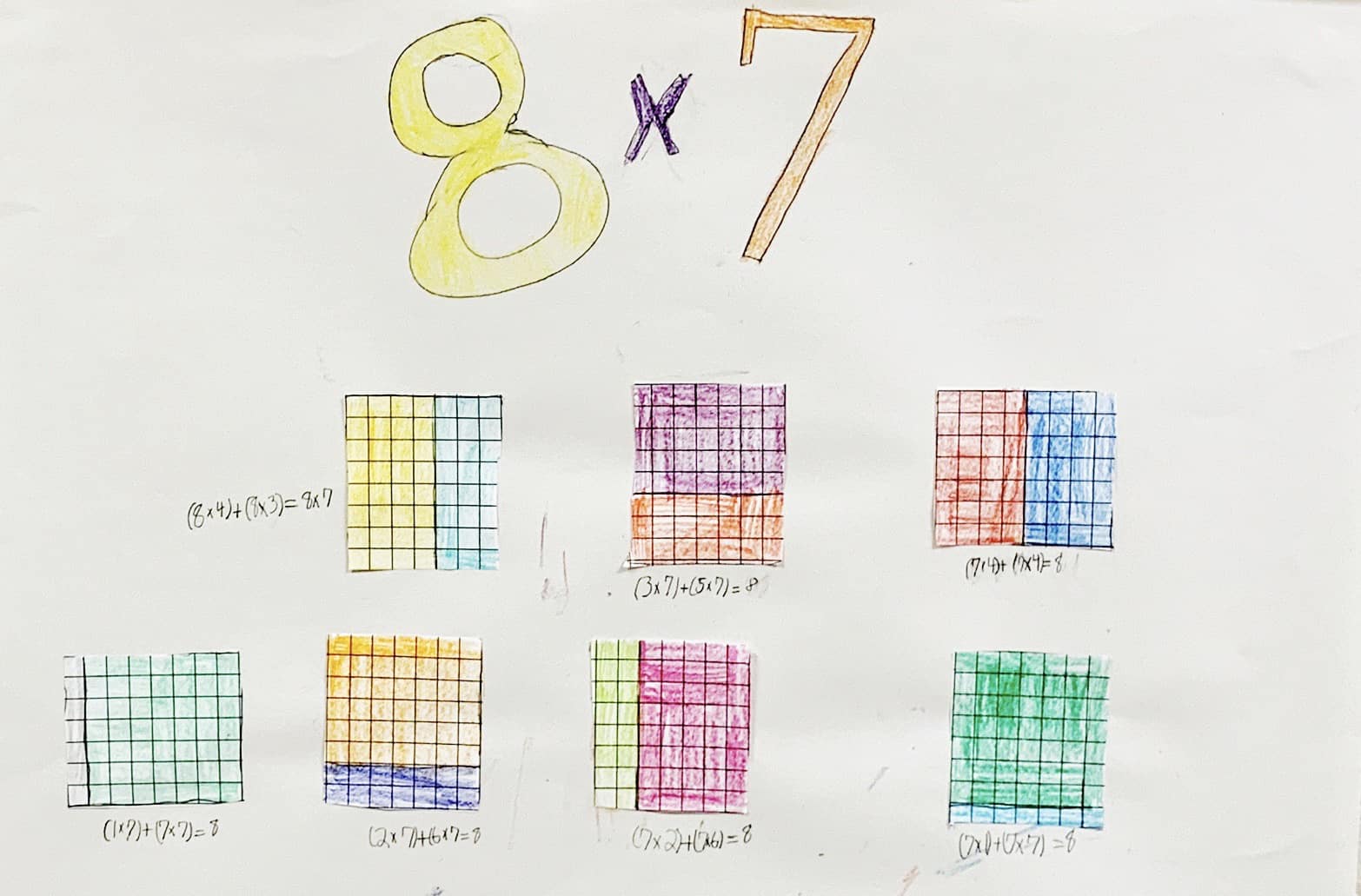
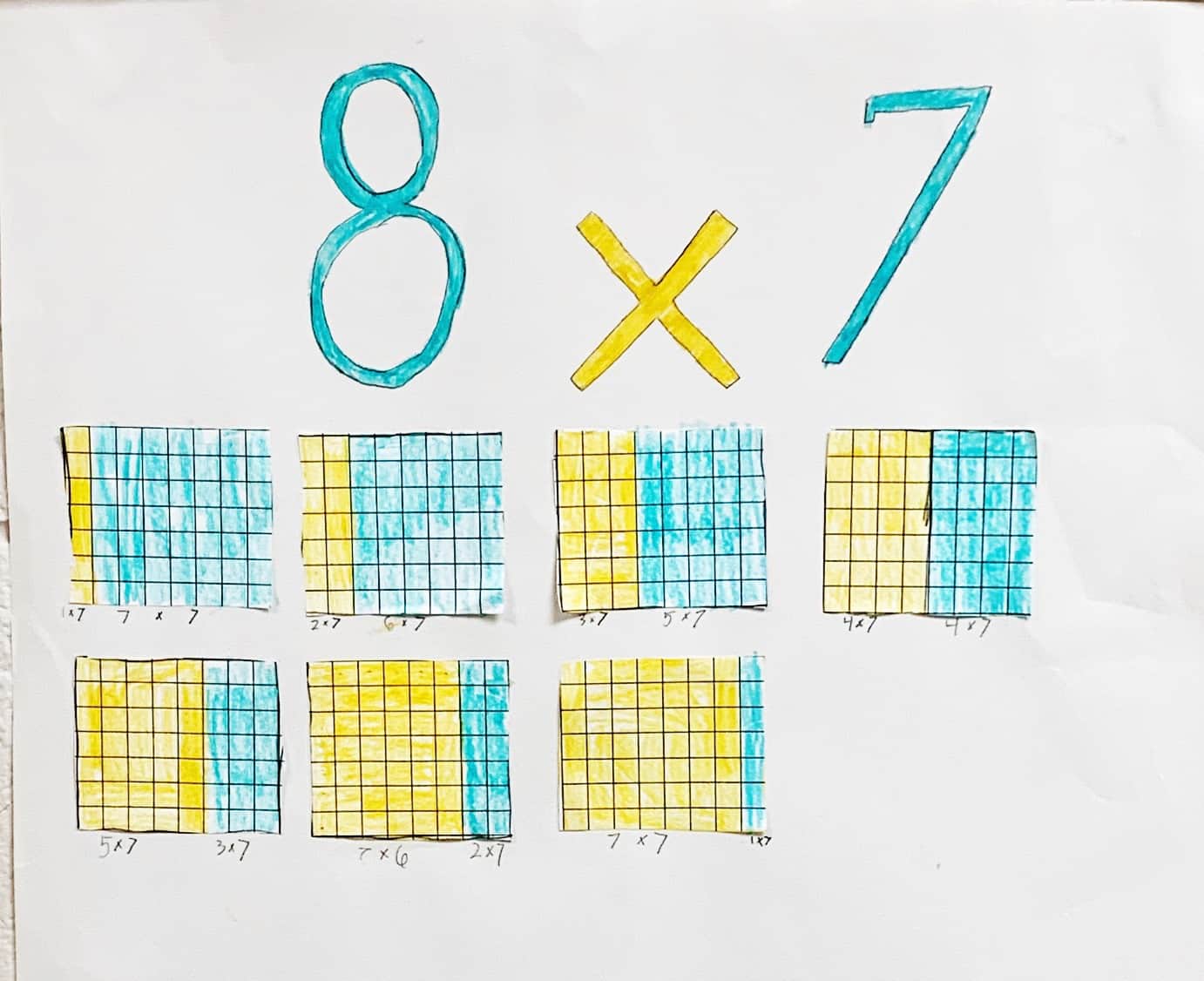
Shade It In
I follow the cut and paste with a distributive property worksheet that gives students a multiplication problem and students shade in squares to represent that problem. This is scaffolded for students, because the first three problems are started for students. In the last three problems, students must determine how to break apart the problem. At this point of instruction, students typically feel pretty comfortable with the distributive property. You can download this page for free here.
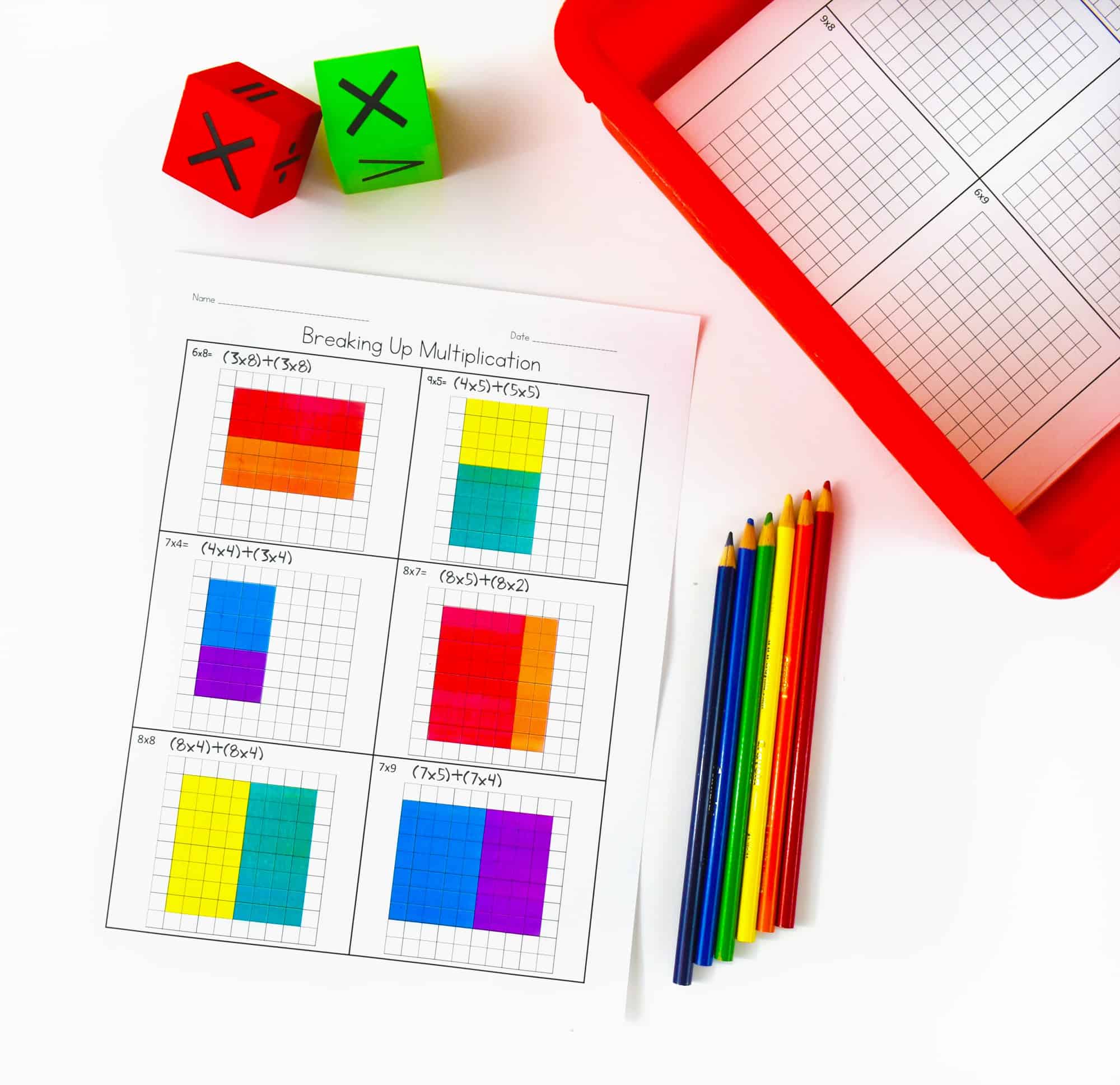
I certainly recognize that content of these distributive property worksheets and/or lessons is not specifically stated in my fourth grade standards. However, this concept is essential for teaching area models and partial product and partial quotient. You can see below how I begin to transition students to larger multiplication problems. You can read more about my fourth grade multiplication instruction here.

If you have any questions about these distributive property worksheets and activities, feel free to leave a comment or send an email! You can find all of the files here.
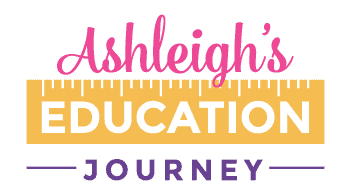
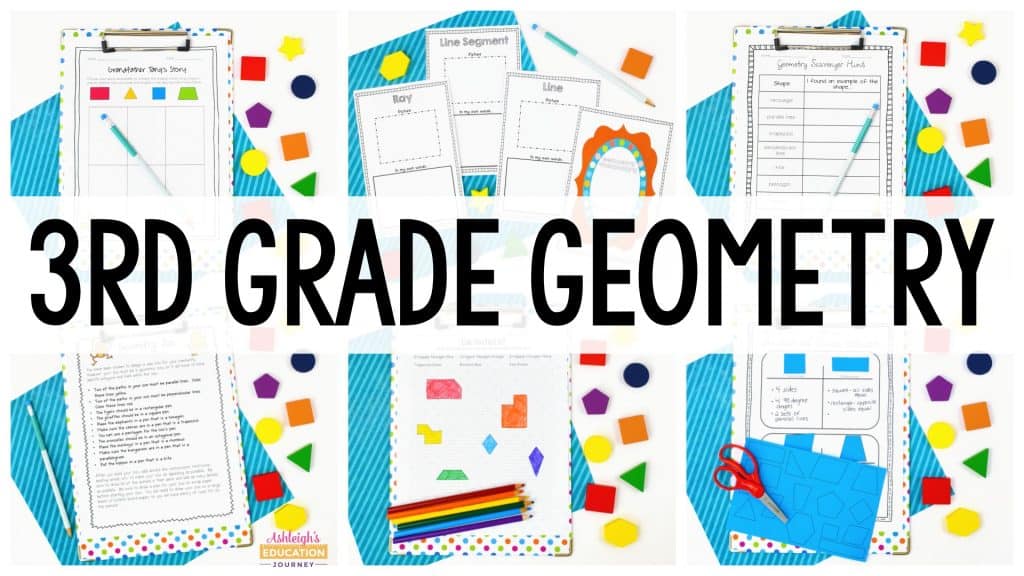
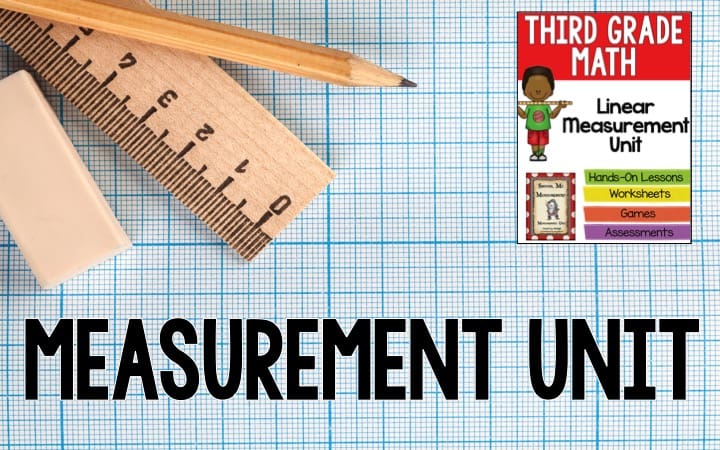
I love these activities! Thank you for sharing!
Thank you so much!
These are great resources! Thank you!
Do you have these available to print? I would love to use this as I begin multiplication with my kiddos.
I do! All of the lessons are in this resource.